What Could Sustainable Teacher Recruitment Campaigns Look Like?
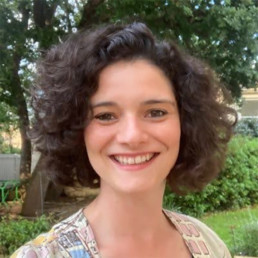
Written by Emma Sheppard
Emma founded The MTPT Project, the UK's charity for parent teachers, in 2016 when on maternity leave with her first child. She has 12 years experience as an English teacher, Lead Practitioner and ITT Lead, and now runs The MTPT Project full time.
When I trained to teach in 2010, I was drawn into the profession by the motivation to Make a Difference. I wanted to be a Changemaker; to have Social Impact; to Do Good. And I was willing to work all hours and make sacrifices to – essentially – satisfy my guilty white saviour complex.
Maybe that’s a little cutting: after all, a sense of moral purpose and the pursuit of meaningful work are values to live and stand by.
But, two years later, after missing holidays with my family, developing chronic migraines and unable to identify any other hobbies beyond the bassoon that I had once enjoyed (but no longer had time to play), I burnt out and quit UK education for a stint in an international school, and the luxury of an expat lifestyle.
Vivid memories of two recruitment videos remain with me from this time. In the first, a young man rides to school in the dark, and is the first in the building to switch on the lights. He excels at his job, cares for his students. At no point do we see him doing anything other than living and breathing teaching.
In the second, a young man wakes up, arrives at school, and we jump between his previous office job (dull) and his current teaching role (fulfilling). At dinner time, he talks about how great teaching is and then gets into bed, and the cycle repeats itself. At no point is there anything in his life other than teaching (and the back of his girlfriend’s head).
There is nothing incorrect about either advert: teaching is a brilliant and life-affirming career. And – let’s admit it – as teachers, we do love to regale our friends and family members with hilarious school anecdotes at every opportunity. The kids are the best bit. Indeed, both adverts are powerful appeals to potential recruits who want to do nothing but teach.
But for how long do we want to – or are we capable of – martyring our whole lives to our profession?
Surely, if we want to see improved teacher retention, we need recruitment campaigns that sell teaching as a career choice that allows for a life beyond the classroom?
This is where a recent video from Reach Teacher Training has got things so right. Like the videos previously mentioned, this advert follows two teachers from the start to the end of their working day, but the marketing team behind this piece have made some deliberate directorial decisions about the culture that new recruits can expect at Reach.
In the first iteration of the video – a 29 second clip – Reach dedicate 6 seconds to images of one of the teachers hugging her own child and waving goodbye at the door before she drives away. That is 21% of expensive marketing time given over to stating that teaching is a family-friendly career choice – at least at a Reach Academy.
In the second version of the video, Reach set aside a glorious 23 seconds (of 55 seconds in total, so 42% of the entire clip) to the life-friendly nature of their school. The first teacher joins her running club to run home with her pals in the sunshine. Meanwhile, we zoom in to the second teacher closing her laptop and checking her watch as she finishes her day. Her watch says 15:54 and, presumably, she’s on her way to school pick-up.
In both videos, we see the teachers enjoying animated conversations with their students. We see them delivering excellent lessons. We see them Making a Difference.
Indeed, the text that accompanies the social media posts sharing these videos reads: Join our community; Change lives; Train to teach.
But unlike those adverts that drew me into a military lifestyle of teaching that – as a 22-year-old with no real prior experience of the workplace – I could not sustain, these adverts state very clearly that the dream is possible. Teaching is a life-friendly career, state Reach, and one that you can enjoy for years to come around all the other beautiful moments that life will offer you.
Bravo, Reach Teacher Training, and the team behind your recent recruitment video.
Pride Month 2024 - Responding to homophobic language: guidance for schools using Oracy and No Outsiders
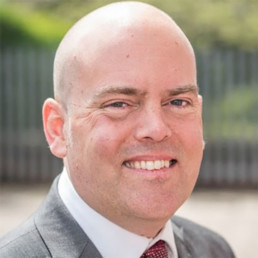
Written by Andrew Moffat
Andrew Moffat has been teaching for 25 years and is currently PD Lead at Excelsior MAT. He is the author of “No Outsiders in our school: Teaching the Equality Act in Primary Schools” and “No Outsiders: everyone different, everyone welcome”. In 2017 Andrew was awarded a MBE for services to equality and diversity in education and in 2019 he was listed as a top ten finalist in the Varkey Foundation Global Teacher Prize.
Ensuring equality for all cannot be achieved if any group of people feel they are unseen, unwelcome or feel targeted because of the person they are. As teachers, we strive to ensure that everyone feels seen, everyone feels welcome, and no one feels they have to hide their true selves, or parts of their identity.
In preparing children for life in modern Britain, we need to be clear and consistent in our efforts to make schools a safe place where children understand there are different ideas in society and prejudice may exist in the outside world, but prejudice and discrimination do not exist here, because in our school, there are “No Outsiders” and everyone is welcome.
Children are allowed to hold different views. I am a big champion of oracy as it encourages children to see both sides of a debate and understand it is possible to hold two views at one time. However, while different views are embraced, the othering of a group of people is not allowed. A child can disagree with a point of view and still show respect; this is the golden thread of a no outsiders ethos.
If a child chooses to use homophobic language, this must be tackled immediately. Children must understand there is no tolerance of prejudice at our school. It is the job of any adult to respond to homophobic language, as this is a safeguarding issue (KCSIE, 2023, “Children who are LGBT” page 51),
A quick response is; “Excuse me?” or, “What do you mean by that?” followed by, “And what do we say at our school?” to which the expected reply is “There are no outsiders”. Reiterate, “That’s right, there are no outsiders here, so you need to think about the language you are using. How are you going to put that right?”
All homophobic incidents should be recorded, and parents informed.
If homophobia arises in a debate where no individual is being targeted but there are attitudes forthcoming that need to be addressed, make sure they don’t go unchecked. An oracy framework enables us to challenge such attitudes effectively by asking the class to respond; “Would anyone like to respond to that?”. If the comment is offensive, for example if a child says, “gay people are wrong” it’s important that the adult responds immediately along the lines of;
“Can we think about the language we are using here… those ideas may exist in the outside world, but we need to be really careful about the words we use here. To say something is ‘wrong’ is different to saying, you ‘don’t agree’ with it. Do you want to re-phrase so that you are not othering anyone or being offensive?”
“What does the law say about this?” (The Equality Act, British law says it’s ok to be LGBT)
“What do we say at our school about different people?” (We say there are no outsiders, and everyone is welcome here.)
It’s vitally important the teacher addresses the attitudes while not giving their own opinion so we don’t get in to an argument or lead the children down any particular path. What we need to do instead is remind children it is ok to hold different views (“and that’s what makes this debate so interesting”) and we can still show respect and non-judgement. It’s ok to disagree with one another, the important thing is that everyone still feels they have a place here, including the child who is being offensive. It is the child’s views that are not welcome; the child is still welcome.
If a child brings their faith into the discussion; “My religion says it’s wrong”, respond in this way:
“You’re right, there are different views about this in different religions. And that’s the best thing about living in the UK- we have different views and beliefs, freedom of speech and democracy, and we have the Equality Act which protects religion and belief, so people are allowed to hold those views under British law. Who else is protected under the Equality Act? (disability, age, race, pregnancy and maternity, marriage and civil partnership, sex, LGBT) hmmm that’s interesting isn’t it – on the one hand you have religion and belief and on the other you have LGBT … both protected, both allowed… so I suppose we have to find a way to respect both views. We can co -exist without saying the other is wrong….”
And then open out the conversation, move it along using the oracy technique; “Who wants to build on that?”
Keep coming back to “That’s why we say there are no outsiders… we can have different opinions, and we can still respect each other. No one is pushed out because of their religion, their race, or because of their sexual orientation.”
I recognise that these conversations are not easy but they are important and we need to be having them with our children. My advice is to practice responses with each other as a staff team.
Here are some useful assembly links from www.no-outsiders.com:
https://no-outsiders-assembly.blogspot.com/2024/05/pride-2024.html
Assembly pictures : Football shirt (no-outsiders-assembly.blogspot.com)
Assembly pictures : football (no-outsiders-assembly.blogspot.com)
Assembly pictures : Bathroom (no-outsiders-assembly.blogspot.com)
Assembly pictures : Beano (no-outsiders-assembly.blogspot.com)
Assembly pictures : LGBT history month (no-outsiders-assembly.blogspot.com)
Assembly pictures : What is homophobia? (no-outsiders-assembly.blogspot.com)
Assembly pictures : Curly hair (no-outsiders-assembly.blogspot.com)
https://no-outsiders-assembly.blogspot.com/2024/06/veteran.html
South Asian Heritage Month: free to be me.

Written by Zahara Chowdhury
Zahara is founder and editor of the blog and podcast, School Should Be, a platform that explores a range of topics helping students, teachers and parents on how to ‘adult well’, together. She is a DEI lead across 2 secondary schools and advises schools on how to create positive and progressive cultures for staff and students. Zahara is a previous Head of English, Associate Senior Leader and Education and Wellbeing Consultant.
This year’s theme for SAHM is beautiful: free to be me. As we celebrate lived experiences, storytelling and authenticity, it seems only right that freedom and embracing our individual narratives is next.
This year’s theme has made me think where have I felt my most free? It’s not an easy question to answer. You see, growing up South Asian, (in my case, a British Pakistani Muslim, who’s family was born and raised in Africa), masking your identity can often feel normal, particularly when masking makes you feel safe in public, school and at work. Returning home, comes with its own comforts and conflict: finding joy in your culture and sticking out because you don’t really ‘fit’ within it either. Freedom then becomes a rather grey area and one that does not feel easily attainable.
Over the years, particularly I adulthood, there are a few spaces where I have come close to ‘free’: one was in my classroom. When teaching, my classroom was predominantly full of students who looked like me, shared similar lived experiences and most importantly we connected over an understanding of shared ambitions, aspirations and values. I felt free in an office with a colleague who shared my heritage; breaktimes and lunchtimes were full of laughter, candid conversations and asking each other, ‘what did your mum use to store atta in the kitchen?’, ‘were your sofas covered in shrink wrap too?’
Since then, I have felt most free in conversation with South Asian educators across the sector, most recently in conversation learning all about the wonders of Pehalwaan Juice (if you know you know…I definitely didn’t!). In many ways I share this with caution: for someone who works to amplify diversity, is there a problem if my freedom is sought and felt within my own community? Do I then just enjoy being a part of my own echo chamber?
The answer is no. Within these spaces diversity thrives. Diversity of thought, feelings, faith, work, experiences – being South Asian does not make us all one and the same and every South Asian friend, colleague and student I have connected with has a different story and identity. If anything, the freedom I feel in these spaces makes me more determined to centralise my identity in mainstream spaces too.
My childhood and teen years were branded with the term ‘coconut’ – in many ways, I didn’t think much of it then and I don’t think much of it now. What I do think about now though is how the identity of a ‘coconut’ lacked freedom. Consciously and subconsciously (and I really hope fellow South Asians can relate) I spent my childhood and adolescence straddling between several identities, depending on the audience – and I happened to be pretty good at it; I still am (we are pros when it comes to masking). I (still) do not know enough about my heritage, and I still don’t feel very ‘white’ either. Perhaps this is what imposter really means.
I studied all of this at university, wrote about it for my dissertation. 15 years later, specialising in a field that very much reflects the truth of my life couldn’t be more imperfectly perfect, no matter how much I question it on a daily basis (awareness and celebratory months are only one piece of the ‘work’). If anything, my experiences as a teacher and now EDI trainer, speaker and consultant are in some ways liberating and in other ways, revealing of just how far ‘we’ (marginalised and minorities in the West) have to go to be free.
South Asian Heritage is rich, diverse, nuanced and just huge – I am so naive and ignorant of its beauty. There is so much to learn. I’m not sure I’m free to be me just yet…but I think (and hope) we’ll get there soon.
In light of this and all of the learning and connections we have to make, I’m excited to share a space, network and group for South Asian Educators to connect, talk and be. Assistant Headteacher and Author, Yamina Bibi has said, the network will be a space ‘for anyone who is looking for a safe space for those of South Asian heritage. The challenges and issues facing South Asian Educators is somewhat different to those from other heritage groups as they are often thought of as the hard workers, obedient, quiet, shy, oppressed by colleagues and society in general. This network will support more educators to have their unique voices heard.’ We want this network to be collaborative, safe, empowering and a community where we can learn from one another too. Please Join us here!
Supporting the Emotional Needs of Young People in Schools
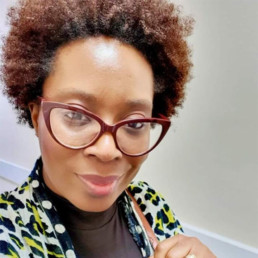
Written by Bianca Chappell
Bianca Chappell is a Mental Health Strategic Lead, Cognitive Behavioural Coach and Mental Health First Aider.
As an educationalist with over 15 years of experience in secondary education, spanning roles such as Head of Year and Head of Alternative Education in both the UK and New York, and as a certified master NLP and Cognitive Behavioural Coach, I am passionate about providing opportunities for young people to thrive and excel in education by meeting their pastoral and emotional needs.
The Importance of Emotional Support in Schools
The ongoing challenges with mental health, exacerbated by lockdowns and social isolation, have brought to light the critical importance of providing a platform to support the emotional needs of young people in schools. The pandemic has exposed and intensified mental health issues, with 1 in 6 children now experiencing a mental health problem, up from 1 in 9 in 2017. Furthermore, approximately 1 in 10 students have yet to return to school due to poor mental health and social anxiety since lockdown.
Emotional support is a crucial part of the wider pastoral offer in education. It goes beyond academics, encompassing the well-being of students, which in turn supports their overall development. By fostering positive well-being and emotional support, schools can significantly improve students’ mental health, self-worth, and confidence.
The Impact of Emotional Support on Academic and Personal Development
Providing robust emotional support for young people has a profound impact not only on their mental health but also on their academic performance and behavior. When students feel supported emotionally, they are more likely to attend school regularly, engage in their studies, and achieve higher academic outcomes. In fact, research indicates that students who receive adequate emotional support are more likely to pass their GCSEs and embark on a higher education journey, ultimately leading to a robust career path.
Supporting emotional well-being also contributes to better behavior in school. Students who feel understood and supported are less likely to act out and more likely to exhibit positive behavior. This creates a conducive learning environment where all students can thrive.
A Holistic Approach to Education
My dedication to supporting young people in education has led me to write, implement, and project manage the delivery of a holistic curriculum that addresses the emotional needs of students. This comprehensive approach ensures that students receive the support they need to navigate adolescence with calm, clarity, and confidence. I believe that supporting the emotional well-being of students is as important as safeguarding, and it is our duty of care as educationalists to provide robust platforms of support.
Creating an emotionally healthy school environment is not just a responsibility but a commitment to the future of our young people. By expanding our pastoral offer and integrating emotional support into the fabric of our educational systems, we can help students flourish both academically and personally.
Can you make a difference?
As educators, parents, and community members, it is imperative that we respond to the urgent need to ensure our schools are equipped to support the emotional health of our students. Let’s commit to creating emotionally healthy schools where every young person has the opportunity to thrive.
Join me in making this vision a reality. Together, we can expand our pastoral offer, support the emotional needs of our students, and build a brighter future for the next generation.
For more insights and strategies on supporting emotional well-being in schools, feel free to reach out or follow my work. Let’s make a difference in the lives of our young people.
Safe spaces: a process of co-creation
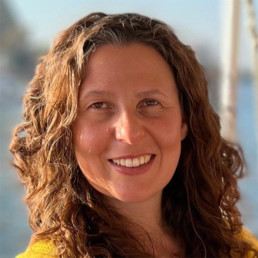
Written by Sherine El-Menshawy
Sherine is a Primary Education Teaching Professional and DEI Lead. She is also a DEI Associate Consultant for Being Luminary, delivering training for school leaders, and is a school governor with a focus on DEI, RSE and PSHE. Her passion and interest in DEI and all things related to identity, culture and power stem from her mixed-heritage background which has shaped her diverse personal and professional journey. She holds an MA in Cultural Studies and lived in Cairo for 11 years working in the field of International Development for UN organisations and regional NGOs.
We often talk about ‘safe spaces’ in education, as we should. The safety of all our students, staff and stakeholders is paramount and protected through our safeguarding framework and responsibilities. However, consideration of what we mean when we say ‘safe spaces’ is an area worth exploration. When we say ‘safe’ we need to be clear on what we mean. We are talking about psychological safety as well as physical safety. Both are crucial for enabling a safe, inclusive learning environment where we can all thrive. And this is where things become more complex. Can we actually be sure that we are considering the psychological safety of our students and those we have a duty of care towards if we don’t make the effort to understand how they feel, why they feel that way and how their experiences, their identity affects their sense of safety in a given environment. Is it right to talk of creating ‘safe spaces’ without doing the work of understanding the power dynamics of any given space or environment, the wider power dynamics at play and how these impact our students differently? Is it right to come up with ambitious plans of how to create ‘safe spaces’ without engaging everyone in the process? I would argue that there is a danger of missing the mark without this deeper understanding. That just as good teaching considers who students are, what they bring and where they are on their own learning journey, and adapts accordingly, schools need to do the same when talking of safe spaces. Safe spaces for who? Safety from what? And what external factors, outside of the school, may be contributing to the need for safe spaces in the first place?
Firstly, we need to explore the feelings of safety and belonging and how they impact learning. We know from our Trauma Informed training that a student who doesn’t feel safe will not be in a position to learn. Safety comes first. So perhaps if we consider, why some students find our learning environments safe spaces and are able to access and learn with ease, while others struggle we may start to understand more. If we apply this lens, we can see the impact of belonging on behaviour and in turn learning attitudes. So how equitable are we being when we rate a student’s ability without considering the impact of the environment and their sense of safety to function on their ability to learn in that space? We need to go deeper, build stronger relationships with our students to be able to see the real barriers to learning, as well as understand the power dynamics of the other relationships in the learning space or classroom.
We know that children who have experienced trauma have so much more to process in order to feel safe and to learn. We try and make accommodations for this in our schools and classrooms. But how far are we considering the child that is too fearful of putting up their hand and getting the answer wrong and asking ourselves what the barriers are for that child to confidently engage with the learning in an outward way? How much effort are we placing on fostering a safe culture in the classroom, modelling these behaviours, celebrating them between peers and insisting on them? Setting clear boundaries for all, that keep us all feeling safe. We need to be amplifying the strengths of all our pupils clearly and overtly for them and visibly in front of the rest of the class. Explicitly recognising the little triumphs that perhaps go unnoticed and encourage all pupils to do the same for themselves and for each other.
When looking at a class of children and considering their progress, what is not represented in the data is the disadvantage of not fitting in and how this impacts a child’s learning and their experience. The nuances of identity and how parental networks, language, cultural mannerisms affect how easy it is for a child to fit with the group and feel like they belong all have an effect. How far are they actively hiding aspects of their identity because they don’t feel safe to bring their full authentic selves to the space? As adults, I think we can appreciate the difficulty of not belonging and how this presents as disadvantage in terms of friends, allies, networking, connection, having a voice, being heard, being seen, self-confidence, willingness to take risks, self-esteem etc. Applying the same to a classroom of children, we need to understand exactly those dynamics, listen to our children, and actively foster an inclusive culture, which will go some way to enabling safer spaces.
We can’t assume that these principles are being endorsed and applied outside of school. In fact, we can assume that cultural biases and hierarchies are prevalent and active outside of school in the wider world and that these will impact the dynamics and realities of all our stakeholders – our children, our families and our staff. We need to consider this when we talk of safety and think about creating a truly inclusive culture. The alternative – assumptions and assertions of safety and inclusivity which is not the experienced reality of our stakeholders – only serves to disempower, alienate, isolate. It leads to masking, compounds feelings of being unsafe and essentially excludes. This can have serious consequences for mental health and learning.
What we are essentially talking about here is culture. The culture in the classroom, in the school and of course the consideration of the wider culture within which the school and the education system are positioned, as well as our home cultures which shape each of us as actors in that space. Now ‘culture’ is one of the terms that we all feel we have an idea of what it means but struggle to explain. When I embarked on my Cultural Studies Masters Degree at the Birmingham School of Cultural Studies at Birmingham University more than 20 years ago, we started by researching, and thinking developing a deeper understanding of what we mean by culture. We discussed the term at length, each of us having a different perception of what we were talking about when we used the term ‘culture’. I urge you to investigate the term yourself and consider the multiple ways and contexts in which we use the term. A simple google search will bring multiple usages and definitions, all somehow correct yet different. What we really started to understand was the fact that culture is not static, it is not fixed in time or space, it is not a thing, it has multiple dimensions and multiple understandings, meanings and applications. It is when we talk of culture as something that can be conceptualised as having a set meaning and is fixed that we find we are trying to make things fit with an assumption that there is a shared understanding of what the word means. And this is important because when we are able to understand ‘culture’ in this fluid sense, we can really see how it is collaborative, changing all the time, it belongs to us all and we all have an impact and influence the culture at any given time in any given space. One cannot be a static part of a fluid concept unless disengaged and isolated from it, and even then one’s presence, even if not overt, would influence the culture. There are power dynamics yes, but essentially culture is always changing and has the possibility to change through our interactions and engagement with each other building connection. We are all active actors in any given space or time that influence the culture. So if we now think about a classroom made up of 30 students and a teacher, we would be wrong to think that the teacher is the only one that can influence the culture of that space at that time. We would be wrong to assume that the teacher can dictate the culture and make it whatever they want it to be because cultures develop from the ways in which those sharing a space at a particular time build connection, develop common meaning, learn, interact, and engage with each other to co-create common codes of practise for those interactions. The culture is co-created by each person that shares that space and how they interact with all the other people. Each of us is different and brings something different to that space, so creating a safe culture must include everyone – it is a co-creation process and cannot be dictated and created by one person of authority from above.
With this thinking in mind, we cannot approach this fluid co-creation of culture in a particular space with a rigid approach that essentially forces its participants to fit. Instead, we need to truly understand difference and ensure we are not coming at this with our assumptions. We need to be human-centred in this pursuit. The golden rule: don’t assume that what may feel safe for you, feels safe for everyone. In the first instance, we need to engage our students with this and provide different ways for them to have a voice, express themselves. A collaborative approach is needed, understanding and learning together about safety and how inclusive practice is central to enabling us to feel safe to learn. Remember, not all students feel safe to speak out loud, but this does not mean they don’t have a voice and that their voice is not valid and central to contributing to a safe culture. We need to use various channels of communication for student voice that don’t leave students feeling exposed and vulnerable. This methodology requires careful consideration and should not only take one form. It also needs to be ongoing. Think of it as a journey we embark on together, there is no final destination, just a common direction that we are exploring together, checking in on each other as we travel.
Next, and this is so important – we need to look at our data, our context, and listen to what the data and the responses tell us. This can be difficult. We all want to believe that in our pursuit of putting the students first that we are actually achieving the aims of inclusivity and safety and it can be difficult to be confronted with pupil voice to the contrary. However, we must take comfort in the fact that engaging with this process in the first place, embarking on the journey together, listening to our students, even if we don’t like what they tell us, is us supporting them and putting their needs first. So we must properly respond to the data and include our students in that process. There is nothing worse than asking for opinions, asking questions, receiving feedback and then not actively working with that feedback. Student voice is not a one-time question, we need to keep assessing, building in lines of communication through which our students can feedback, and we need to ensure that students are involved and engaged in this process every step of the way. Remember we are co-creating and this process is fluid and developing all the time.
Finally, being open to broaden and deepen our own lens to understand the realities of those in our care is essential to embarking on the journey of co-creating safe, inclusive spaces. This is a journey of learning for us as teachers and leaders too and we need to be open and curious to the idea of creatively navigating this process. Educating ourselves on inclusivity, belonging and always positioning ourselves as a co-creator and learner is key. Safety and inclusivity are not an additional consideration to layer on top of our work they are integral to a learning environment and culture that enables everyone to flourish and grow – they are central to what we do as educators. The golden rule: don’t assume a space feels safe for others just because you say it does.
Advancing Black history education in the UK
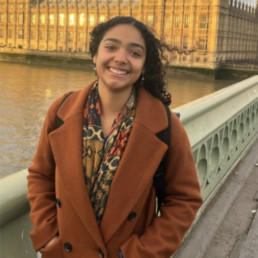
Written by Katie D'Souza
Katie D'Souza is a recent MA Education graduate, whose dissertation titled "Understanding the impact of 'our island story': exploring feelings of identity and belonging for Black British students" is currently under review for publication in the Curriculum Journal. Katie has since worked for a small business called The Educate Group, supports university staff to diversify their curricula and lead more inclusively, and now works at the Office of the Children's Commissioner, helping to ensure that the government listens to the voices of the children and young people living in this country.
Did you know that you can ask your MP to host a roundtable for you in parliament? The Black Curriculum (TBC) founder, Lavinya Stennett, certainly knew this, and last week took the opportunity to bring together key players in the Black history sphere for a critical discussion of Black history education in the UK, hosted by Bell Ribeiro-Addy MP.
TBC’s mission is to work with key stakeholders to embed Black history into the national curriculum. This roundtable sought to find practical and productive actions for ways to achieve this, and further cemented the determination for Black history to be meaningfully incorporated into the national curriculum, all year round.
With contributions from Professor Deirdre Osborne, expert in feminism, race and poetics, Michelle Codrington Rogers, citizenship teacher and NASUWT President, and award-winning history teacher and author Shalina Patel, amongst others, participants left this roundtable energised to arm the next generation of students (and ultimately leaders) with the comprehensive knowledge of history they need to navigate our increasingly globalised world.
A survey conducted by Bloomsbury in 2023 found that more than half (53%) of those surveyed could not name a Black British historical figure, and that only 7% could name more than four. The same survey suggests that less than 1 in 10 Brits believe that Black people have resided in England for more than 1000 years, assumptions erring towards 200 years, when in fact the answer in closer to 2000. Is this really the state of our history education system at the moment?
More can, and should, be done. Teaching Black history does not just build essential knowledge about structural and institutional racism, and Black brilliance, joy, and success. It also helps to create a sense of belonging for students with diverse heritage in UK classrooms, which may even serve to improve attainment and academic progress.
However, as it stands, the only mandatory (statutory) topic on the Key Stage 3 history curriculum is the Holocaust. Whilst the Department for Education has defended this set up as giving schools and teachers the freedom and flexibility to include Black history, in practice, the non-statutory nature translates as schools having little incentive to change their existing approach to history.
Shalina’s powerful account of her experience as a history teacher of 15 years spoke to the importance of the supportive leadership team in her school giving her both the time and resources to construct a department that is committed to building an inclusive history curriculum.
Unfortunately, this is not the case for everyone. When there is resistance to change at management and/or senior leadership team level, it can make it really difficult for teachers to do this important work alone.
Bell’s remarks further emphasised the role that teacher confidence and resources play in delivering a comprehensive Black history education. She reasoned that all teachers must be equipped to do justice to Black history in the classroom, so that the responsibility does not fall solely on teachers of colour. TBC’s resources are a great way to begin to do this, as Robert Primus, a secondary school history teacher, advocated, but this must be paired with some more concrete changes to the way history is taught in our schools.
Therefore, in the face of a general election in July, we urge the next government to consider the following asks from TBC and the other participants at this roundtable:
1 Introduce mandatory racial literacy training
The consensus at the roundtable was that we know teaching Black history is essential but that there are real, practical barriers to achieving this widely across the UK. TBC together with sisters Naomi and Natalie Evans who founded Everyday Racism ask that the next government introduces mandatory racial literacy training for school staff and leaders, under the rationale that racial literacy acts as a form of safeguarding for students from diverse backgrounds. Every adult interacting with children and young people must understand the intersectionality of identity in the UK and how the way that narratives and histories are told in the classroom deeply affects the sense of self and belonging of those listening. It’s imperative that teachers are given the time, headspace and resources to become more racially literate, and we believe making this training statutory is the way to make this happen.
2 Make Black history a statutory part of the curriculum
Recent RSHE guidance published by the Department for Education has proven that if they want to, the government is willing to prescribe what schools should and shouldn’t teach. Whoever forms the next government should make Black history a statutory part of the history curriculum. The reality is that value of teaching Black history for improving cultural understanding, increasing sense of belonging, and students seeing themselves reflected is unfortunately often overlooked by headteachers and senior leaders for whom the current school system places such great emphasis on grades and exam results. Making Black history statutory will support teachers to overcome challenge from their school leadership, as the content will be on official specifications and be included in exam materials too. There has already been some good progress in this space at Key Stage 4, where GCSE exam boards recently introduced a migration thematic study, covering migrants in Britain as well as the history of Notting Hill, but for the Key Stage 3 curriculum much remains to be achieved.
3 Equip teachers to meaningfully integrate Black history
Black history must not be seen as a tick-box exercise but should be meaningfully integrated into the curriculum. To realise this ambition, teachers must be equipped with the resources and empowered with the knowledge and confidence to do justice to Black history without ‘othering’ the stories of the past. For example, learning about Mansa Musa and the richness of West Africa before any mention of the transatlantic slave trade will support both teachers and students to reframe their understanding of Black history. Or when studying medieval England, to simultaneously look at medieval Mali, or Japan, or Baghdad. It is not necessarily a case of overhauling the whole curriculum, but weaving interesting and positive stories into the topics that are already so well known. It is about teaching a full history, not just the version constructed by the victors. As Bell summed up nicely, ‘you’re not learning a complete history if you’re not learning about black history’.
LGBTQ+ teachers don’t receive the training and support they need

Written by Dr Adam Brett
Adam has completed a doctorate exploring the experiences of LGBT+ secondary teachers. A presentation of his findings can be found here. He also co-hosts a podcast called Pride and Progress, @PrideProgress, which amplifies the voices of LGBT+ educators, activists and allies.
Originally posted on The Conversation in May 2024:
https://theconversation.com/lgbtq-teachers-dont-receive-the-training-and-support-they-need-228162
Republished with permission of the author.
LGBTQ+ teachers report feeling stressed and even discriminated against in the workplace due to their identity. This is a problem when keeping teachers in their jobs is vital. Teaching is facing a crisis in both recruitment and retention: in 2021-22, more than 39,000 teachers quit the profession.
But there is no formal support or training offered to LGBTQ+ teachers by the Department for Education. Supporting the teaching workforce who identify as LGBTQ+ and making teaching a welcoming profession should be a priority for the government.
For LGBTQ+ teachers, working in UK schools may no longer be the deeply traumatic and dangerous experience it was under Section 28 of the 1988 Local Government Act, which was repealed in 2003. This law sought to ban local authorities and their schools from promoting the acceptability of homosexuality as a “pretended family relationship”.
But LGBTQ+ teaching staff continue to face challenges such as feeling unsafe in their workplace.
Throughout their careers, LGBTQ+ teachers are placed in the difficult position of deciding whether they should conceal or reveal their sexual or gender identity. This is not a decision they are trained to deal with, nor a decision they make just once. It is particularly tricky in schools where teachers must decide if, when, and how to be open with different groups – staff, students, parents, and others involved in school life.
As an LGBTQ+ former teacher, I know first-hand the emotional tax that comes with continuously negotiating LGBT+ visibility and identity within school.
Unsafe spaces
For my doctoral research I worked with 12 LGBTQ+ teachers from a variety of contexts, including faith, private, and single sex schools. The teachers took photos to represent the spaces where they felt most and least safe within their school, and described the significance of their photos.
The teachers changed how they behaved out of fear of being seen as LGBTQ+. They did this in particular in open or visible spaces, such as when on break duty, leading an assembly or in the staffroom.
In these spaces, the LGBTQ+ teachers were fearful of comments or incidents related to their identity that they felt unequipped to deal with. One teacher said:
I give my assemblies quite often, and I don’t hide my sexuality from anybody, so the student body knows that I’m gay … but when I’m doing my assemblies I feel, I feel scared and I don’t know if it’s because I know that they know that I’m gay and therefore, I’m like afraid of them … I don’t know hurling a slur or something.
By contrast, the teachers often described their classrooms as the spaces where they felt most safe. Here, they had created their own routines, relationships and systems.
Among the 12 participants, there were teachers who had been told not to discuss their sexual or gender identity. One teacher told me that they and others had been asked to sign a non-disclosure agreement in a Catholic school: “We weren’t allowed to talk about the fact [that we were gay],” they said.
These are extreme examples. Generally, though, the assumption of heterosexuality in schools can lead to personal questions and situations that LGBTQ+ teachers often feel unequipped to deal with.
Cisgender and heterosexual teachers might be asked about their partners and families and would feel no fear of retribution or backlash in answering those questions. But what might be an entirely unremarkable conversation for a heterosexual teacher might well be deeply fraught for an LGBTQ+ teacher. This can be understood as “heterosexual privilege”.
Despite thousands of the teacher workforce identifying as LGB+, they receive no formal support or training for the challenges that they are likely to experience in their career. Sending LGBTQ+ teachers into schools without adequate support or training will probably lead to these teachers experiencing discrimination and stress.
Some teacher training providers ensure that trainees from minority backgrounds receive training and support to help them face the additional barriers they may experience in schools. However, implementation remains inconsistent.
Future reforms to the Initial Teacher Training and Early Career Framework, which outlines the minimum entitlement for trainee and early career teachers, must reflect these challenges to ensure a minimum and equitable level of provision for LGBTQ+ teachers. If they don’t, fewer LGBTQ+ teachers will enter or remain in the profession. Students and families won’t see themselves represented, and young people won’t be equipped for life in a diverse society.
LGBTQ+ people have the potential to make exceptional teachers and leaders. With the right support, they can thrive in the profession and provide young people with the role models that they desperately need.
Help Unlock Your Students Potential & Revolutionise Your Teaching Approach with The Young People Index®.

Written by Cecilia Harvey
A quadrilingual Social Anthropologist whose passion for the richness of diversity and the psychology of the human race, Cecilia focuses her Equity, Diversity & Inclusion work on connecting people through difference. As a subject matter expert, Cecilia has driven and coordinated strategic initiatives centred around identity, gender, LGBTQ+, ethnicity and disability, working with multiple stakeholders. Accomplished in designing training programmes such as unconscious bias awareness, microaggressions and inclusive language, Cecilia’s deep understanding of culture, psychology and behaviours has allowed her to become an Accredited Facilitator in Cultural Intelligence (CQ ®).
When we work with young people in an academic setting it can sometimes be difficult to grasp some of their unique attributes as they all learn the same curriculum. During these years, these young people have likely not yet developed the self-awareness to understand how they can best harness their skills. What benefit would a better understanding of your student’s natural proclivities in terms of the way they work have in your classroom?
The Young People Index® (YPI) is a digital online assessment tool designed for 13-18 year olds to help individuals identify their natural energy when it comes to working in groups / teams, now and in the future. This is vital in deepening a young person’s self-awareness and builds confidence in how they work with others, and in teams.
The Young People Index® can considerably improve the performance and engagement of young people and help teachers, youth workers, and sports coaches to understand the unique contribution each young person makes, or has the potential to make (their energy for impact!). This knowledge can be used in many ways, some of which are: to develop questioning skills, adapt teaching and communication methods, and analyse group dynamics to create more impactful results, be this in the classroom or on the sports field.
The Young People Index® is a product from the The GC Index®, a similar tool that focuses on adults and their impact in the workplace (over 18s). The YPI helps young people at a much earlier age, enabling them to consider environments where they will thrive, not just survive!
What are the benefits to students?
The YPI measures a young person’s energy to make an impact in a team, project, or future organisation and does not measure academic ability. This knowledge of their energy to make an impact can benefit them in various ways:
- Boosting self-awareness, leading to increased confidence in their ability to make an impact on the world. The YPI encourages young people to consider career opportunities aligned with their interests and unique energy for impact.
- Discovering their unique contribution to a team, supporting teamwork and communication.
- Enhancing interview skills by helping them to articulate their unique impact and how they are best utilised in a team at an interview.
- Exploring their leadership potential.
- Identifying areas where they have less energy for impact to build awareness of the need for complementary team members—perfect for aspiring entrepreneurs!
- Facilitating better relationships with teachers and creating optimal learning conditions.
How does it work in practice within Schools?
When a young person completes the online questionnaire, a personalised report is generated, guiding them toward areas where they can thrive based on their unique proclivities.
In Schools, the YPI is usually used as part of an existing career guidance framework. Students complete the assessment at school and then either an in-house trained teacher, or external YPI trained consultant works with the students over the course of term, running workshops that focus on building self-awareness, team working, leadership, and an understanding of personal and organisational values, and how to choose an organisation in the future that aligns with these.
The YPI’s insights significantly improve performance and engagement, whether in the classroom or on the sports field. It’s a powerful tool for shaping young individuals’ futures!
Find out more about us by visiting our website www.youngpeopleindex.com
To download case studies & our brochures, click here.
To arrange a discovery call, email Cecilia Harvey, Accredited YP Gcologist cecilia@culturalnexus.co.uk.

